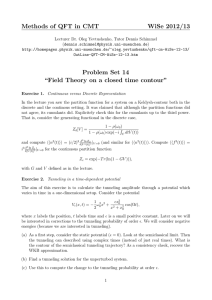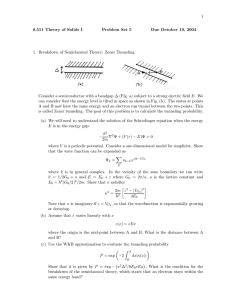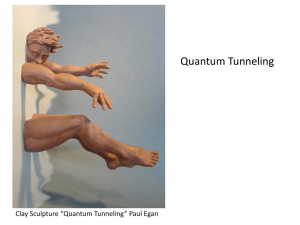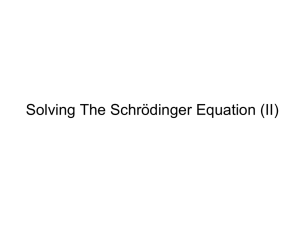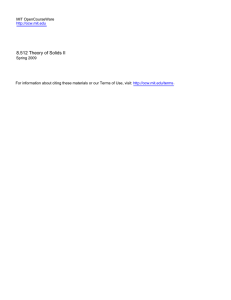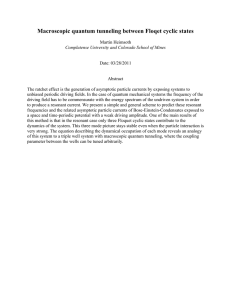Methods of QFT in CMT WiSe 2014/15 Problem Set 10 “Complex
advertisement
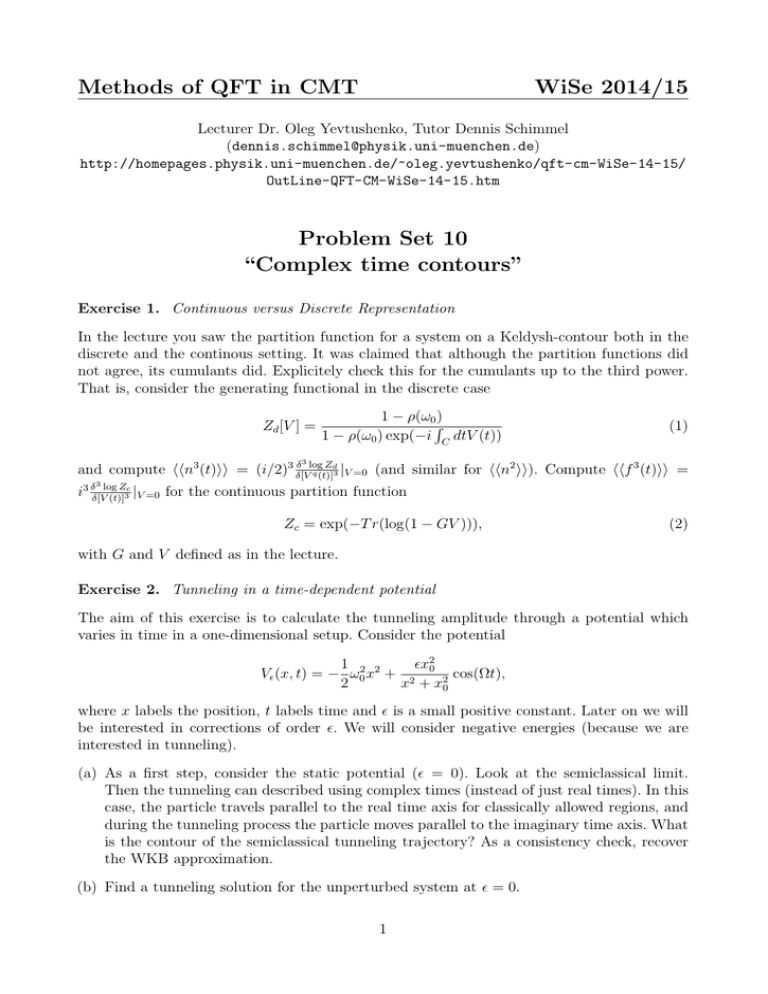
Methods of QFT in CMT WiSe 2014/15 Lecturer Dr. Oleg Yevtushenko, Tutor Dennis Schimmel (dennis.schimmel@physik.uni-muenchen.de) http://homepages.physik.uni-muenchen.de/~oleg.yevtushenko/qft-cm-WiSe-14-15/ OutLine-QFT-CM-WiSe-14-15.htm Problem Set 10 “Complex time contours” Exercise 1. Continuous versus Discrete Representation In the lecture you saw the partition function for a system on a Keldysh-contour both in the discrete and the continous setting. It was claimed that although the partition functions did not agree, its cumulants did. Explicitely check this for the cumulants up to the third power. That is, consider the generating functional in the discrete case Zd [V ] = 1 − ρ(ω0 ) R 1 − ρ(ω0 ) exp(−i C dtV (t)) (1) 3 δ log Zd 2 3 and compute hhn3 (t)ii = (i/2)3 δ[V q (t)]3 |V =0 (and similar for hhn ii). Compute hhf (t)ii = 3 Zc i3 δδ[Vlog | for the continuous partition function (t)]3 V =0 Zc = exp(−T r(log(1 − GV ))), (2) with G and V defined as in the lecture. Exercise 2. Tunneling in a time-dependent potential The aim of this exercise is to calculate the tunneling amplitude through a potential which varies in time in a one-dimensional setup. Consider the potential x2 1 V (x, t) = − ω02 x2 + 2 0 2 cos(Ωt), 2 x + x0 where x labels the position, t labels time and is a small positive constant. Later on we will be interested in corrections of order . We will consider negative energies (because we are interested in tunneling). (a) As a first step, consider the static potential ( = 0). Look at the semiclassical limit. Then the tunneling can described using complex times (instead of just real times). In this case, the particle travels parallel to the real time axis for classically allowed regions, and during the tunneling process the particle moves parallel to the imaginary time axis. What is the contour of the semiclassical tunneling trajectory? As a consistency check, recover the WKB approximation. (b) Find a tunneling solution for the unperturbed system at = 0. 1 (c) Use this to compute the change to the tunneling probability at order . Hint: At order epsilon, the contour remains unchanged, but the action gets modified, such that the tunneling amplitude changes. Exercise 3. Quantum particle coupled to an oscillator bath Consider a quantum particle given by the action Z 1 Sp = dt ((∂t q)2 + ω02 q 2 ). 2 Introduce a bath of oscillators given by the action Z dω X Sb = ψ̄k,ω G−1 k,ω ψk,ω , 2π k where we define G−1 k,ω = ω − iδ − ωk . 2iδ coth(ω/2T ) 0 ω + iδ − ωk (a) Rewrite the quantum particle in terms of qq and qc . (b) Introduce a coupling of the form Z dω X (γk qωT σ1 ψk,−ω + h.c.), Spb = 2π k where γ are complex coupling constants and q T = (qc , qq ). Integrate out the bath, assuming an ohmic dissipation |γ| = λ|k|1/2 , with λ > 0. (c) Perform the sum over the k-modes. (d) In order to understand what has happened, we want to look at the classical limit. To do and qq → ~qq . What is so, reintroduce ~ via S → ~1 S, coth(ω/2T ) → coth(ω~/2T ) → 2T ~ω the classical equation of motion for qc ? 2
